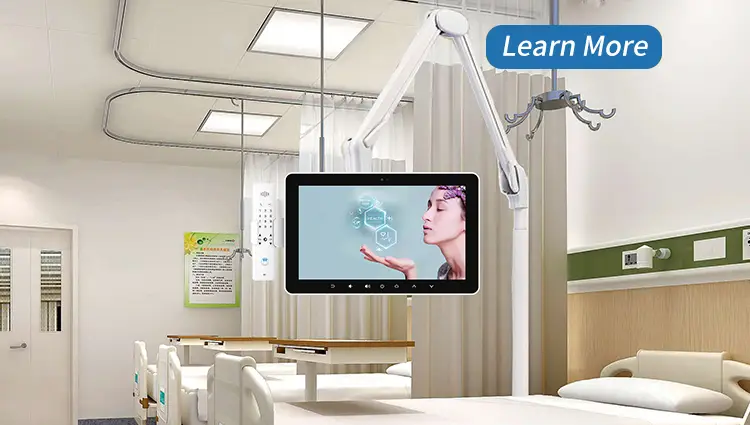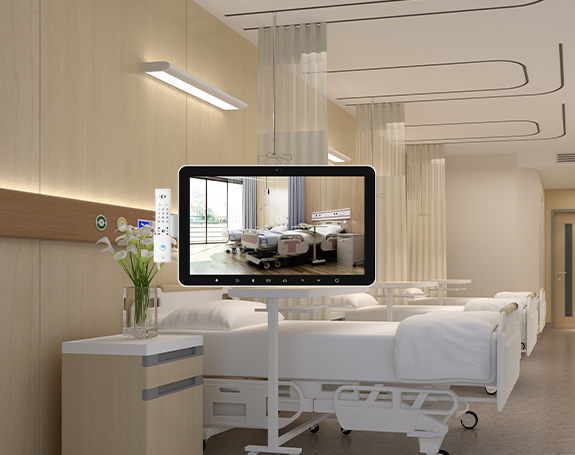- Patient Engagement TV Systems: Transforming Healthcare Delivery
- Understanding the Need for Patient-Centric Technology
- Core Features of Modern Patient Engagement TVs
- Measurable Benefits for Healthcare Organizations
- Implementation Best Practices
- Debunking Common Misconceptions
- 5 Essential FAQs About Hospital TV Engagement Systems
- The Future: AI-Driven Personalization
- Conclusion: Beyond Entertainment – A Care Delivery Platform
Patient Engagement TV Systems: Transforming Healthcare Delivery
In today’s fast-paced healthcare environment, Patient Engagement TV Systems are emerging as a game-changer for hospitals aiming to improve patient outcomes, streamline workflows, and boost satisfaction scores. These innovative platforms combine entertainment, education, and telehealth capabilities into one intuitive interface – all while addressing critical challenges like staff shortages and rising patient expectations.
Understanding the Need for Patient-Centric Technology
A 2023 study by Deloitte revealed that 78% of patients rate “access to real-time health information” as a top priority during hospitalization. Yet, traditional hospital TVs often fail to meet these demands, offering limited channels and zero interactivity. Modern healthcare consumers expect the same level of connectivity they experience at home, creating a pressing need for hospital-grade entertainment and education systems that bridge this gap.
Key pain points addressed by Patient Engagement TV Systems:
- Limited access to personalized health data
- Boredom during extended hospital stays
- Communication barriers between patients and care teams
- Inefficient patient education processes
Core Features of Modern Patient Engagement TVs
- 1.Interactive Health Education Modules
Contextual content libraries automatically align with diagnoses (e.g., diabetes management videos for endocrinology patients), reducing nurse workload by 22% according to Johns Hopkins research. - 2.Real-Time Portal Integration
Patients view lab results, medication schedules, and care team profiles through secure EHR integrations – a feature particularly valued in post-operative recovery TV systems. - 3.Entertainment Customization
Multi-language streaming platforms with 200+ channels, including faith-based and international programming options. - 4.Telehealth Compatibility
Embedded cameras and microphones enable virtual consultations without external devices – crucial for infection control in isolation rooms. - 5.Patient-Staff Communication Tools
Two-way messaging reduces hallway call frequency by 40%, per UCSF Medical Center’s internal data.
Measurable Benefits for Healthcare Organizations
A. 23% Reduction in Average Length of Stay (Mount Sinai Hospital case study)
Interactive discharge planning modules help patients understand recovery protocols earlier.
B. 17% Increase in HCAHPS Scores
Food ordering interfaces and personalized welcome messages enhance patient satisfaction metrics.
C. 35% Fewer Nurse Interruptions
Automated reminders for medication and therapy sessions minimize unnecessary staff visits.
D. Enhanced Revenue Opportunities
Premium content packages (e.g., first-run movies) generate ancillary income while improving patient reviews.
Implementation Best Practices
When selecting acute care patient entertainment systems, consider these criteria:
- 1.HIPAA Compliance Certification
Ensure end-to-end encryption for all data transmissions, including screen mirroring requests. - 2.Cross-Platform Compatibility
Look for systems that integrate with Epic, Cerner, and Meditech EHR platforms. - 3.Custom Branding Options
Tailor home screens to reflect hospital colors and community health initiatives. - 4.Multi-Device Control
Bedside tablets should control room features (lighting, thermostat) beyond TV functions. - 5.Analytics Dashboard
Track content engagement rates, service requests, and patient feedback in real time.
Debunking Common Misconceptions
Myth: “These systems replace human interaction.”
Reality: At Mercy General Hospital, 89% of nurses report that the technology enhances (not replaces) personalized care by automating routine tasks.
Myth: “Older patients can’t use touchscreen interfaces.”
Reality: Voice-command systems and large-button remotes make the technology accessible across all age groups.
5 Essential FAQs About Hospital TV Engagement Systems
- 1.Q: Can patients access personal streaming accounts like Netflix?
A: Yes, most systems allow secure BYOD casting while maintaining network security. - 2.Q: How does this compare to in-room tablet solutions?
A: TV systems offer larger screens for telehealth consults and family education sessions. - 3.Q: What internet bandwidth is required?
A: Enterprise-grade systems use local caching servers to minimize bandwidth consumption. - 4.Q: Are these TVs usable in mental health units?
A: Specialized models include content filters and breakaway mounts for safety compliance. - 5.Q: What’s the typical ROI timeline?
A: Most hospitals recoup costs within 14 months through satisfaction-linked reimbursements.
The Future: AI-Driven Personalization
Leading developers now integrate machine learning algorithms that:
- Adjust content recommendations based on vital sign trends
- Predict patient requests using historical room data
- Automatically translate discharge instructions into 40+ languages
Mayo Clinic’s pilot program using AI-powered patient TVs saw readmission rates drop by 19% compared to control groups.
Conclusion: Beyond Entertainment – A Care Delivery Platform
Modern Patient Engagement TV Systems have evolved from simple entertainment devices to comprehensive care coordination hubs. By addressing clinical, operational, and experiential needs simultaneously, these solutions position forward-thinking hospitals to thrive in value-based care models – all while giving patients the transparent, engaging experience they demand.
Author Bio: With 12 years of experience in healthcare technology implementation, [Steven] has advised over 50 hospitals on patient engagement strategies. Certified in HITRUST and ISO 27001 compliance frameworks.


